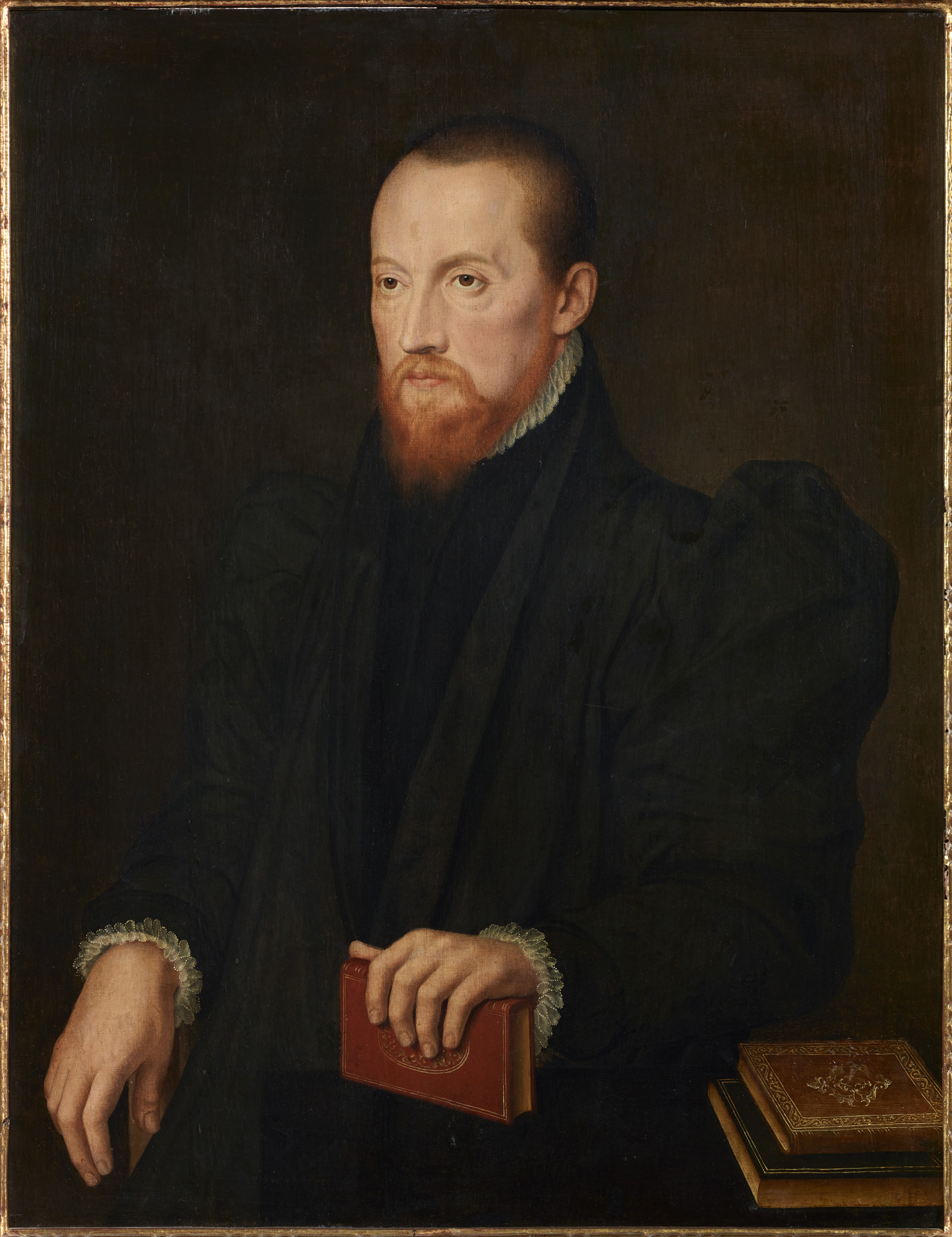
Pierre Pourbus (Gouda, Holanda, 1523/1524 – Brujas, Bélgica, 1584)
Bearded, Red-headed Man, Seated
1555-1565
WORK INFORMATION
Oil on panel, 84 x 65 cm
Formerly considered the work of an anonymous Flemish painter, some years ago it was attributed to Pieter Jansz. Pourbus, also known as Pierre Pourbus, born at Gouda in 1523 or 1524, who joined the Bruges painters' guild in 1543. We do not know who his master was, though a likely candidate is Lancelot Blondel, whose daughter he married in 1544. He entered St. George's Archers' Guild that same year, and the next witnessed the birth of his son, Frans Pourbus the Elder (1545–1585), who worked with Frans Floris in Antwerp. Pieter soon became very successful in Bruges, as evidenced by the fact that he was hired in 1549 to handle decorations for the triumphal entry of Charles V and Prince Philip. He occupied the posts of juror and dean of the painters' guild several times and was frequently called upon to inspect fortifications and waterworks. In 1582 he was visited by the historian Karel van Mander, who included Pourbus in his Schilder-boeck (Book on Painting). He worked for Spanish patrons like Juan López Gallo, Baron van Male, the representative of Philip II in the Netherlands.
Around 1547 he painted An Allegory of True Love (Wallace Collection, London), and there are abundant works signed and dated by him between 1551 and 1583. Pourbus produced large altarpieces, especially triptychs with wings picturing grisaille saints in false niches on the reverse and group portraits on the obverse, such as the Triptych of Saints John the Baptist and John the Evangelist (1549, Museo del Prado). The city also hired him to paint maps—six of the twenty-eight maps mentioned in sources are still extant—and he became an even better cartographer than his father-in-law. Pourbus painted many portraits of the burghers of Bruges: of individuals and spouses, half-length, bust or head only, in nearly frontal three-quarter view.
The man in the Banco Santander Collection portrait wears a black robe with large puffed sleeves and a shirt with short ruffled collar and cuffs, as was fashionable in Bruges during the decade to which we have dated the work. Pourbus usually painted both hands and a glove in one of them, which is not the case here, but on at least one other occasion—Portrait of a Young Monk (Mauritshuis, The Hague)—he put a book in the sitter's hand. The subject here turns to show his right side, as Pourbus usually depicted male sitters, a formal custom. Among the thirty-two brothers pictured on the wings of the 1556 altarpiece for the Confraternity of the Holy Blood, several sport similar beards and some even have red hair, so it is not illogical to suppose that the sitter may be one of them.
While Pourbus showed Italian influences in his religious works, in portraits he followed Flemish tradition, which explains the realistic detail and individual characterisation. The monumental quality of the picture, the neutral ground, the arrangement of the hands and the presence of books, which convey a sense of the sitter's gravity, distinction, elegance and aloofness from the spectator, are all typical of the era and society in which he lived. This work is also remarkable for its refinement and a certain delicacy that makes it superior to many of Pourbus's other portraits. [José Manuel Cruz Valdovinos]

